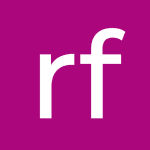

Banks use codes and numbers as identifications. With the help of these codes they can perform various functions related to banking. If you send money to someone in Australia, you must know their BSB number. Whether the transfer is coming across town or around the globe, BSB numbers assist Australian banks in directing money transfers. However, one should always know the BSB number and its importance. The routing number is a nine-digit code used to identify other financial organizations.
This blog is all about BSB numbers and routing Numbers.
Bank State Branch Number or BSB is a 6-digit number representing the bank, bank branch and branch location. Some banks use one BSB code for all branches, while others have different BSB codes for different branches. You must always pay attention to these codes to ensure the funds reach their correct destination!
In simple words, these are very similar to SWIFT codes. But BSB codes are used for local transactions.
BSB is the code used to identify the individual branch of an Australian financial institution. It is used as an addition to the bank account number to identify the recipient. Australian Payments Network supplies the BSB number. This network overseas all BSB numbers in Australia. This united approach gives all Australian banks and branches a standardized identification system.
BSB code has a standardized format to communicate the details that a bank needs. In the 6-digit code:
BSB numbers can be found in different ways:
Making a bank transfer is easy if you have your recipient’s name, address, account number, and sort code in addition to their BSB number. Just visit your neighbourhood branch and chat with a teller; they should be able to start the transfer. A different option is to manage the transfer online by entering your online account and making the transfer there. Banks can impose considerable fees for processing money transfers, so do consider other possibilities.
The routing number is a nine-digit code used to identify other financial organizations. It is also called an ABA (American Bankers Association) routing number and an RTN (Routing Transit Number). It enables institutions to find your specific account when used with your account number. The routing number is used for electronic transactions such as fund transfers, digital checks, bill payments etc.
Banks issue routing numbers based on the state where they operate, meaning a bank in one state will be different from another.
The financial institutions in the US use the routing numbers every time you make transactions. You will be asked for a routing number when you make a:
The bottom line of every bank cheque is preprinted with a sequence of numbers and some symbols. These numbers are not random but contain some important information about the banking systems. This information is used for processing checks and transferring funds.
This combination of numbers and symbols is a MICR line in banking jargon. MICR lines are written in two unique fonts that people and machines can read to allow machines to read checks and decrease check fraud.
In simple words, you can find your routing number towards the bottom line of your cheque. These numbers are preprinted on the deposit slips. If you do not have this handy, you can just:
Different financial institutions use different codes to identify transactions. These codes are used to determine the bill checks, payments, digital check or fund transfers etc. These codes are not just random numbers but numbers with important information about financial transactions and accounts. You must check the codes and numbers carefully for a safe transfer.




